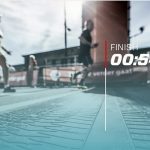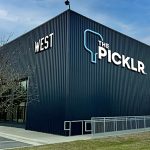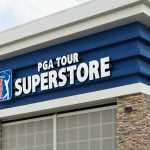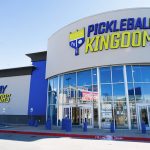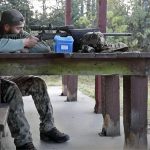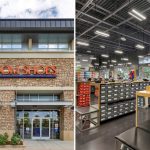Saks Incorporated posted a net loss of $54.5 million, or 39 cents per share for the second quarter ended August 1, 2009, compared to a net loss of $32.7 million, or 24 cents per share, for the prior year second quarter ended August 2, 2008.
Excluding the after-tax loss from discontinued operations of $1.8 million, or 1 penny per share, the company recorded a net loss from continuing operations of $30.9 million, or 23 cents per share for that quarter. That quarter included the following after-tax items totaling $1.0 million, or 1 penny per share:
-$0.8 million related to asset impairments and dispositions (primarily the Saks Fifth Avenue Ft. Lauderdale store closing) and
-expenses of approximately $0.2 million for severance costs.
For the six months ended August 1, 2009, the company posted a net loss of $59.6 million, or 43 cents per share. Excluding the after-tax loss from discontinued operations of $0.2 million, the company recorded a loss from continuing operations of $59.4 million, or 43 cents per share.
For the prior year six months ended August 2, 2008, Saks recorded a net loss of $15.3 million, or 11 cents per share. Excluding the after-tax loss from discontinued operations of $3.4 million, or 2 cents per share, the company recorded a net loss from continuing operations of $11.9 million, or 9 cents per share, for that period. Those results included the following after-tax items totaling $1.0 million, or 1 penny per share:
-$0.8 million related to asset impairments and dispositions (primarily the Saks Fifth Avenue Ft. Lauderdale store closing) and
-expenses of approximately $0.2 million for severance costs.
Stephen I. Sadove, Chairman and Chief Executive Officer of the Company, noted, “Although the economic environment remains difficult, I am extremely pleased with our expense management, and our gross margin performance exceeded our expectations.”
Sadove continued, “The Saks team has diligently managed inventories, expenses, and capital spending throughout this challenging period and has also made adjustments to our merchandising, marketing, and service strategies. With the steps we have taken and others underway, we continue to position ourselves to emerge as an even stronger and more efficient company when the overall economy improves.
-Comparable store sales declined 15.5% in the second quarter, in line with expectations.
Second quarter comparable store sales benefited from the shift of a spring season clearance event into the second quarter this year from the first quarter last year. Excluding this shift, management estimates that comparable store sales would have declined approximately 18.5% for the second quarter. For the six months ended August 1, 2009, comparable store sales fell 22.4%.
Saks Fifth Avenue stores continued to experience weakness across all merchandise categories and geographies. The sales decline in the New York City flagship store continued to be higher than the company's aggregate comparable store sales decline. Saks Direct posted an approximate 14% comparable store sales increase in the quarter (also positively impacted by the aforementioned event shift) and an approximate 3% decrease on a year-to-date basis, compared to increases of approximately 30% and 35% in last year's second quarter and first half, respectively.
OFF 5TH's comparable store sales performance continued to show relative strength during the quarter.
The company's second quarter gross margin rate was 29.9% compared to 34.6% in last year's second quarter. The 29.9% rate was higher than management's expectation of 27% to 29%. As previously disclosed, the company expected a year-over-year decline in gross margin rate for the quarter due to a clearance event shift (accounting for approximately 300 basis points of the decline) as well as increased markdowns as a percent of sales. For the six month period, the gross margin rate was 34.4% in the current year versus 36.5% in the prior year.
Sadove commented, “Managing Selling, General, and Administrative expenses continues to be a top priority. The entire organization has embraced diligent expense control and is challenging every expenditure. We were able to reduce year-over-year SG&A (excluding certain items) by approximately $33 million in the second quarter (an approximate 18% decrease), far more than our expected reduction of $15 million. As a result, we leveraged SG&A during the quarter, even on a $95 million sales decline.”
As a percent of sales, SG&A was 27.6% in the current second quarter compared to 28.6% in the same period last year (excluding certain items). For the six month period, the company has reduced year-over-year SG&A by over $77 million (excluding certain items).
Primarily due to the sales and gross margin rate decline, the company�s operating loss widened to $67.7 million in the current year second quarter from a $40.0 million operating loss in the same period last year (excluding certain items). On a year-to-date basis, the operating loss was $65.5 million compared to operating income of $2.7 million in the prior year (excluding certain items).
Balance Sheet Highlights
Consolidated inventories at August 1, 2009 totaled $670.3 million, a 17.6% decrease over the prior year. Inventories decreased 18.1% on a comparable stores basis.
At quarter end, the company had approximately $12.5 million of cash on hand and $85.0 million of direct outstanding borrowings on its revolving credit facility.
Effective at the beginning of the fiscal year (February 1, 2009), the Company adopted FASB Staff Position APB No. 14-1, “Accounting for Convertible Debt Instruments that may be Settled in Cash upon Conversion (Including Partial Cash Settlement) which requires that issuers of convertible debt instruments separately account for the liability and equity components in a manner that will reflect the entity�s nonconvertible debt borrowing rate when interest cost is recognized in subsequent periods.
A portion of the carrying value of the $230 million 2.0% convertible notes (approximately $71.9 million) was reclassified to equity as of its March 2004 issuance date, representing the equity component of the proceeds from the notes calculated assuming a 6.25% nonconvertible borrowing rate. The discount is being accreted to interest expense over the 10-year period to the first put date of the notes. Accordingly, at August 1, 2009, $38.7 million of the convertible notes balance was classified in equity. The new accounting pronouncement required retroactive application; consequently, the prior year amounts have been revised.
During the second quarter, the company completed an $120 million 7.5% convertible notes offering. The net proceeds of approximately $115.4 million were used to pay down the revolving credit facility. In accordance with FSP APB No. 14-1, a portion of the $120 million 7.5% convertible notes (approximately $22.0 million) was classified in equity as of the May 2009 issuance date, representing the equity component assuming a 13.0% nonconvertible borrowing rate. The discount is being accreted to interest expense through the maturity of the notes in December 2013. Accordingly, at August 1, 2009, $21.4 million of the convertible notes balance was classified in equity.
During the second quarter, the company repurchased $23.0 million of the 7.5% senior notes due in December 2010 at a slight discount, realizing a $0.8 million pre-tax gain on extinguishment of debt. The company�s remaining senior notes total $169.3 million and mature as follows: $22.9 million in December 2010, $141.6 million in October 2011, $2.9 million in December 2013, and $1.9 million in February 2019.
Funded debt (including capitalized leases, borrowings on the revolving credit facility, and the equity component of the convertible debentures) at August 1, 2009 totaled approximately $662.9 million, and debt-to-capitalization was 42.4% (without giving effect to cash on hand).
The Company has flexibility under its debt facilities, with no short-term maturities of senior debt.
The revolving credit facility terminates in September 2011, and the company is subject to no financial covenants unless the availability falls below $60 million. At that point, the company is subject to a fixed charge coverage ratio of at least 1:1. Based on the company's operating plans and cash management actions, it expects to have ample availability under its revolving credit facility throughout the year and to be free cash flow positive for 2009. The company does not expect to be subject to the fixed charge coverage ratio at any time during the year.
Net capital spending for the second quarter and six months ended August 1, 2009 totaled approximately $17.9 million and $45.9 million, respectively. Management anticipates capital spending will total approximately $55 million for the full fiscal year. A disproportionate amount of the annual spending occurred in the first six months primarily due to the timing of the New York City flagship and Miami Dadeland store renovations that are nearing completion.
Outlook for the Second Half of 2009
Sadove noted, “The current economic and retail landscape continue to make predicting future sales and gross margin performance with any certainty very difficult. The company's assumptions for the second half and full year of fiscal 2009 (excluding the impact of certain items) are outlined below. Variation from the sales trends, up or down, could materially impact the other assumptions listed.
“Comparable store sales decline for the second half of the fiscal year in the mid-to-high single digit range (with the third quarter weaker than the fourth quarter), resulting in a decline of low double digits for the full fiscal year.
-Comparable store inventory levels are expected to decrease in the low- to mid-teen percentage range through the second half of 2009.
-Based upon current inventory levels, planned merchandise receipt flow approximately 20% lower than prior year, and the company's promotional calendar and permanent markdown cadence, the company expects a substantial year-over-year gross margin recovery in the second half of 2009, with gross margins in the 35% to 37% range. This would bring the full year�s gross margin to the 35% to 36% range.
-Absolute SG&A dollars (excluding certain items) are expected to decline by approximately $10 million in the second half of 2009, bringing the annual net SG&A reduction to approximately $87 million. Substantially all of the SG&A expense reductions have been realized in the first half of 2009 as the company was able to reduce variable expenses commensurate with the higher sales declines in the first half and as the company laps approximately $50 million of expense reductions that were made in the second half of 2008.
-Other Operating Expenses (rentals, depreciation, and taxes other than income taxes) are expected to total approximately $163 million to $165 million for the second half of 2009, bringing the full year total to approximately $323 million to $325 million. Depreciation and amortization, which is included in the above amounts, should total approximately $70 million for the second half and approximately $140 million for the full year.
-Interest expense approximating $24 million for the second half of 2009, based on existing debt arrangements and interest rates. Effective the first fiscal quarter of 2009, the company adopted FSP APB No. 14-1 requiring the interest expense on its $230 million convertible notes to be based on the prevailing interest rates at the time the convertible notes were issued as opposed to the stated 2.0% rate. This accounting change will result in a non-cash increase in interest expense of approximately $4 million, which is included in the estimate above.
The new accounting pronouncement requires retroactive application; consequently, interest expense for prior years has been restated for these notes. The new accounting pronouncement also applies to the $120 million convertible notes issued during the second quarter. The Company expects a non-cash interest charge of approximately $2 million associated with these notes, which is included in the estimate above.
-An effective tax rate of approximately 38.0% for the second half of the year.
-A basic common share count and a diluted common share count of approximately 138 to 139 million each for the second half of the year.
-Capital expenditures of approximately $9 million for the second half of the year, bringing the full year total to approximately $55 million, a reduction of approximately $75 million from 2008.
Sales Detail
Total sales numbers below represent owned department sales and leased department commissions for Saks Fifth Avenue stores, OFF 5TH stores, and Saks Direct. Total sales (in millions) for the second quarter and six months ended August 1, 2009 compared to last year�s second quarter and six months ended August 2, 2008 were:
|
|
|
|
|
|
|
|
|
|
|
|
|
|
|
Total |
|
Comparable |
|
|
This Year |
|
Last Year |
|
(Decrease) |
|
(Decrease) |
Second Quarter |
|
$ |
561.7 |
|
$ |
657.0 |
|
(14.5 |
%) |
|
(15.5 |
%) |
Six months |
|
$ |
1,183.0 |
|
$ |
1,507.0 |
|
(21.5 |
%) |
|
(22.4 |
%) |
|
|
|
|
|
|
|
|
|
|
|
|
|
Leased department commissions included in the total sales numbers above were as follows (sales in millions):
|
|
|
|
|
|
|
This Year |
|
Last Year |
Second Quarter |
|
$ |
5.3 |
|
$ |
6.2 |
Six months |
|
$ |
11.4 |
|
$ |
13.8 |
|
|
|
|
|
|
|

